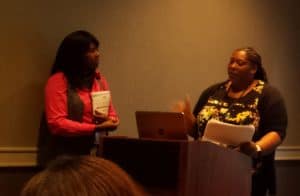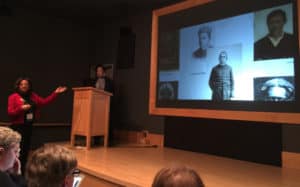
When students learn from primary sources, they have an opportunity to connect with the past. But such interactions with primary sources—items connected to a topic of study and time period—shouldn’t be limited to high school research papers.
My 1st-grade students recently prepared for a trip to the National Museum of Transportation in St. Louis by analyzing photographs and films of streetcars to better understand the part they played in our city. Inspired to share their learning, students wrote about streetcars and built their own with simple tools like paper, scissors, tape, and glue. Their learning was purposeful and meant something to them.
Librarians can play a key role in bringing primary sources to younger students. My work in sourcing primary material usually comes about in one of three ways:
Finding a connection to the curriculum. Incorporating photos and films of streetcars happened because a teacher wanted something more immersive to prepare her students for their field trip, and we brainstormed from there. This is the most common collaboration: when a teacher feels a lesson or unit needs help and we see if primary sources fit.
Uncovering a compelling primary source. I remember finding a picture of a group of Thanksgiving maskers—children who paraded around in costume on Thanksgiving asking for candy and pennies—and wanting to find out more about this lost tradition. I knew I wanted my students to explore the photos and newspaper articles that I had found, too. An effective primary source can excite students and drive them to discover the answers to their own questions.
Exploring an analysis strategy. For these resources to be meaningful, students must do more than look at them. They have to question, evaluate, and connect with the material. When I read Falling in Love with Close Reading by Christopher Lehman and Kate Roberts (Heinemann, 2013), I saw how students can use a close-reading strategy in their learning. Historical newspapers instantly came to mind, and I began scouring Library of Congress’s Chronicling America for articles.
An effective primary source can excite students and drive them to discover the answers to their own questions.
Offering primary sources to teachers—as well as the analysis strategies that students can use to interact with these sources—has surfaced new opportunities to partner with faculty members and made me a more vital part of my school’s teaching community.
Consider becoming more versed in primary sources in the following ways:
- Subscribe to the Teaching with the Library of Congress blog.
- Join the Teaching with Primary Sources Teachers Network.
- Follow institutions like the Digital Public Library of America and the Smithsonian Learning Lab on social media.
- Explore newspapers in Chronicling America or browse an exhibit from the American Archive of Public Broadcasting.
- Connect with nearby libraries, historical societies, and museums to learn about local holdings that can help students uncover their community’s past or bring a national event closer to home.
When I discover an interesting primary source or analysis strategy, I want to incorporate it into the classroom. I talk with teachers in my building about developing primary-source sets that I think would support the curriculum. I email librarian colleagues to share blog posts that may be useful to the teachers they work with. I tweet ideas for using primary sources and pilot new research methods through library lessons.
Seeing how primary sources promote interaction, inquiry, and learning teaches me more about their benefits and only makes me want to continue finding ways to inspire students with historic materials and points of view.


